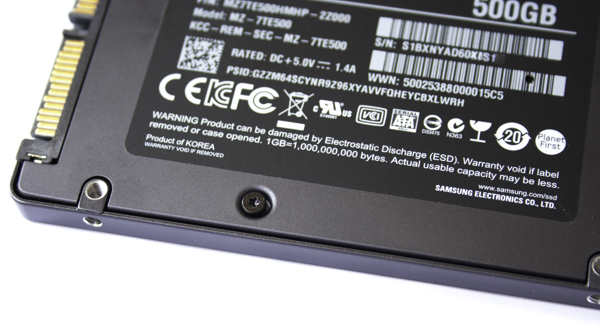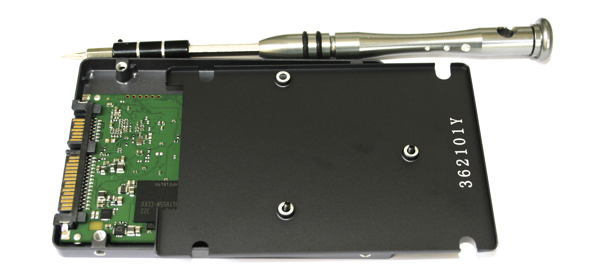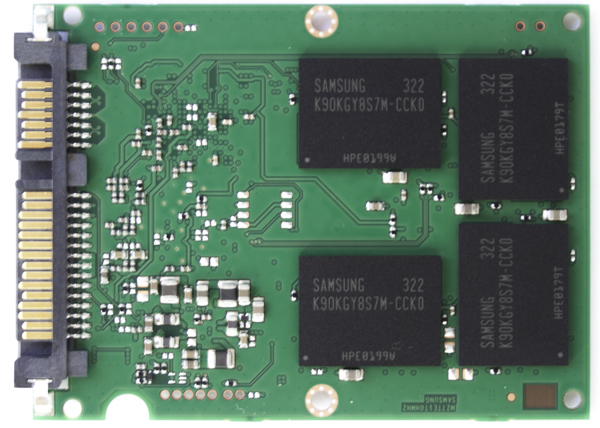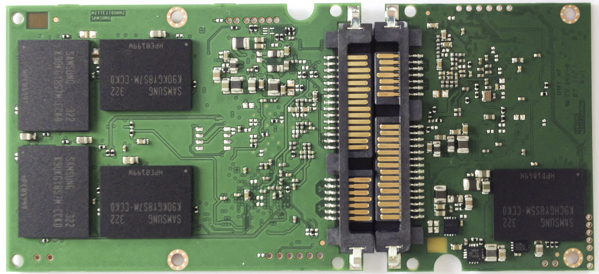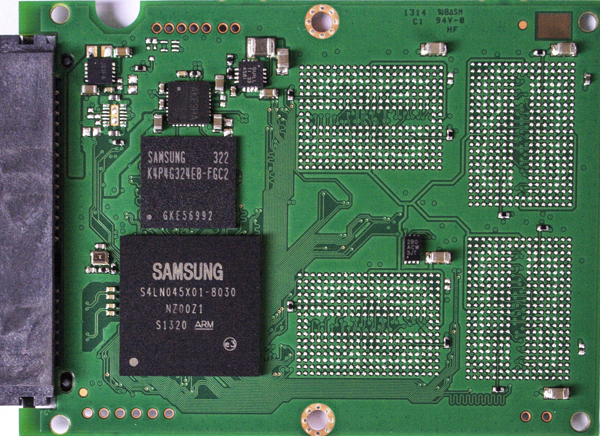Samsung 840 EVO SSD: Tested At 120, 250, 500, And 1000 GB
Last week, Samsung unveiled a successor to its wildly popular 840 at the company's Global SSD Summit in Seoul, South Korea. Stacked with a series of new features and 19 nm, three-bit-per-cell NAND, we benchmark four models and make a recommendation.
Inside Samsung's 840 EVO
Getting into the svelte gunmetal-grey chassis is a snap, so long as you have a #5 pentalobe screwdriver handy. You'll find two screws under the label and one that's plainly visible. Don't even bother removing the label; just push the bit right through it.
There are no thermal pads, stickers, or adhesives under the cover. The drive's top, circuit board, and bottom separate as easily as oil and water.
This is the 500 GB model's PCB. Samsung's 120 GB drive is actually shorter, as you can see in the side-by-side shot below. Each NAND package plays host to eight dice, except on the 120 GB drive, which uses two quad-die packages. Otherwise, each package's octet of 128 Gb Toggle-mode NAND delivers 128 GB capacity.
The MEX 400 MHz triple-core Cortex-R4-based controller is labeled S4LN045X01-B030. This new revision runs 100 MHz faster than the older 840's processor, and will also be able to apply Opal 2.0-compatible encryption, either through the drive itself or through Windows 8's BitLocker Drive Encryption, once an upcoming firmware update is certified. This is big news in the self-encrypting drive space, since there aren't many desktop drives with Opal 2.0 support yet. Naturally, this will change as competing vendors refresh their product lines.
Lastly, we see the drive's LPDDR2 DRAM cache. In the picture of the 500 GB 840 EVO, it's a 512 MB package. Samsung is deploying 1 MB of cache for every gigabyte of capacity, which is fairly standard these days.
Get Tom's Hardware's best news and in-depth reviews, straight to your inbox.
Current page: Inside Samsung's 840 EVO
Prev Page The 840 EVO's Bag Of New Tricks Next Page Test Setup And Benchmarks